The World Economic Forum (WEF) has launched an initiative called Shaping the Future of Environment and Natural Resource Security, an inspiring collaboration that is focused on achieving global economic growth without causing harm to the environment, and preferably improving the state of our global environment.
The WEF initiative has been publishing research papers on a vast array of technologies that have come into play since the 1950s, and blockchain technology is, to no surprise, one of these.
In collaboration with PWC and Stanford University’s Stanford Woods Institute for the Environment, they produced a research paper named “Building Block(chain)s for a Better Planet.”
In this article, we take a look at the most interesting perspectives and insights brought forth in this research paper.
Pressing Environmental Challenges
The paper focuses on the current state and potential of blockchain technology with a specific focus on its application in tackling pressing environmental issues.
Pressing global environmental challenges stem from the unprecedented economic prosperity seen since the second half of the 20th century.
Even though we have experienced a very positive economic growth (real output grew 20 times and 700 million people have shifted into the middle class), this has happened at the expense of our natural environment; pursuing economic growth, and thus demand, is putting increasing pressure on our environment.
Left unguided, economic and technological advancements have the potential to accelerate the environment’s degradation.
However, the research paper identifies blockchain technology as having the potential to transform how humans interact with one another and the environment.
According to the paper, the 6 most challenging environmental threats are:
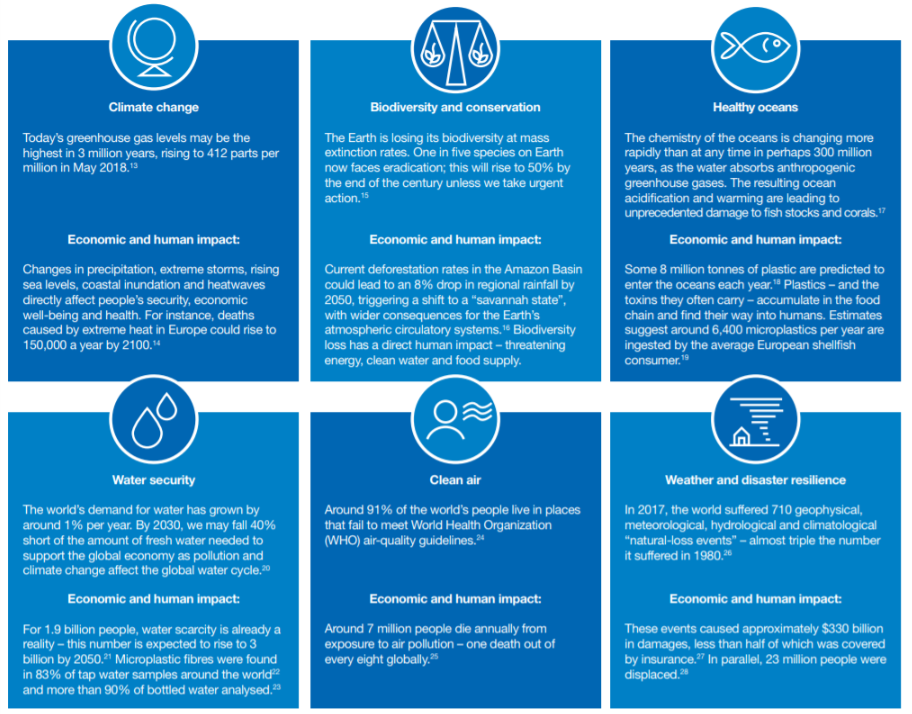
Blockchain Use Cases for the Environment
2017 was marked by cryptocurrency and ICO mania. However, what most didn’t realize is that less than 1% of these projects were in the energy and utilities sector.
Research and analysis conducted by the WEF for their research paper has identified over 65 use cases for blockchain technology with regard to battling environmental challenges, signaling that the use case potentials in that sector are definitely there.
Based on the above 6 environmental challenges, the paper presents potential blockchain solutions for these concerns.
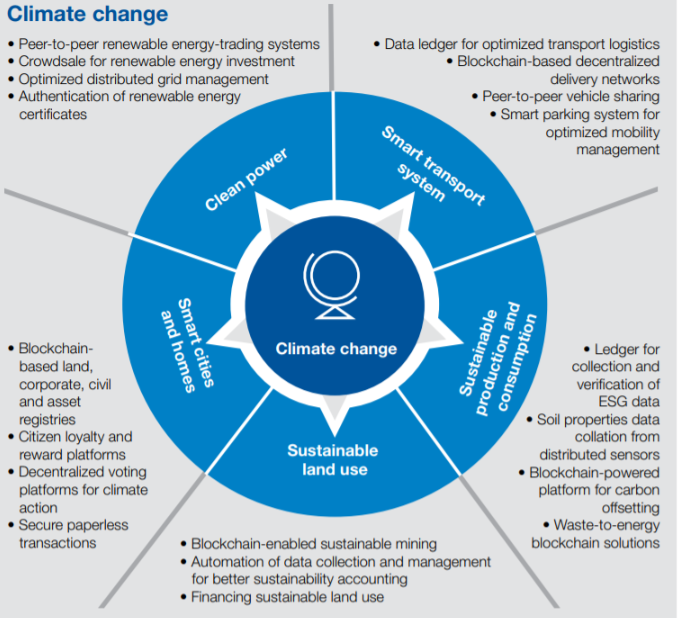
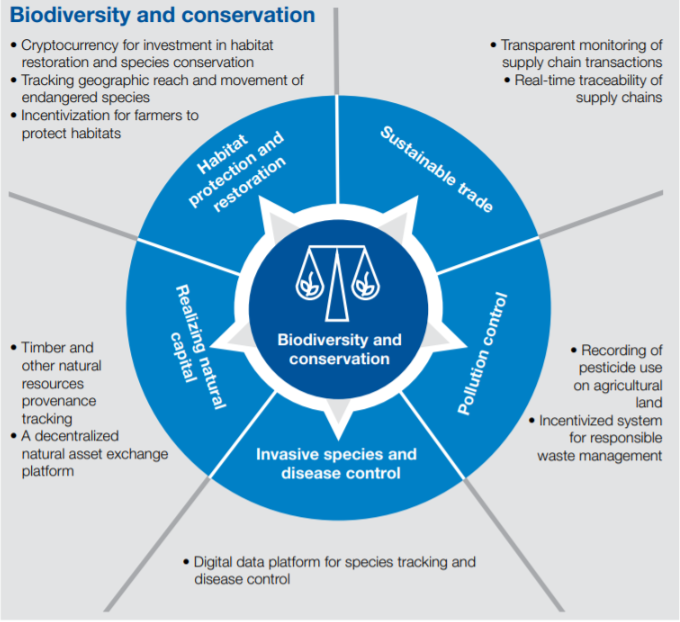
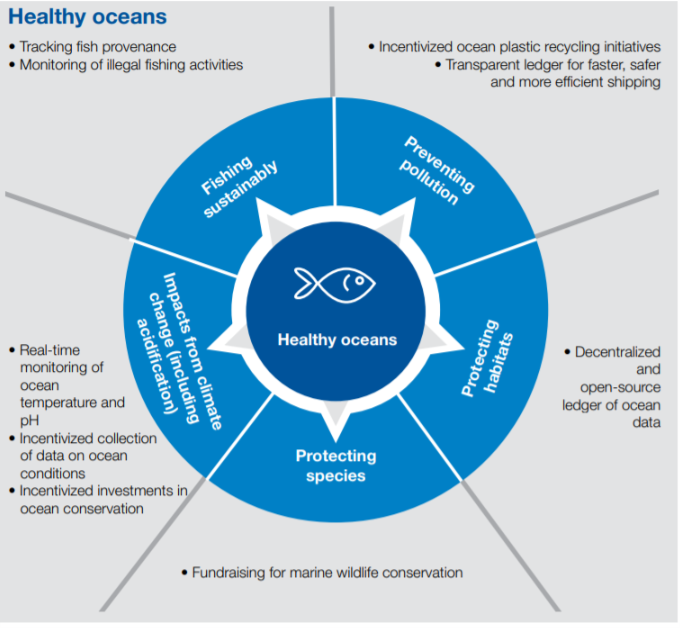
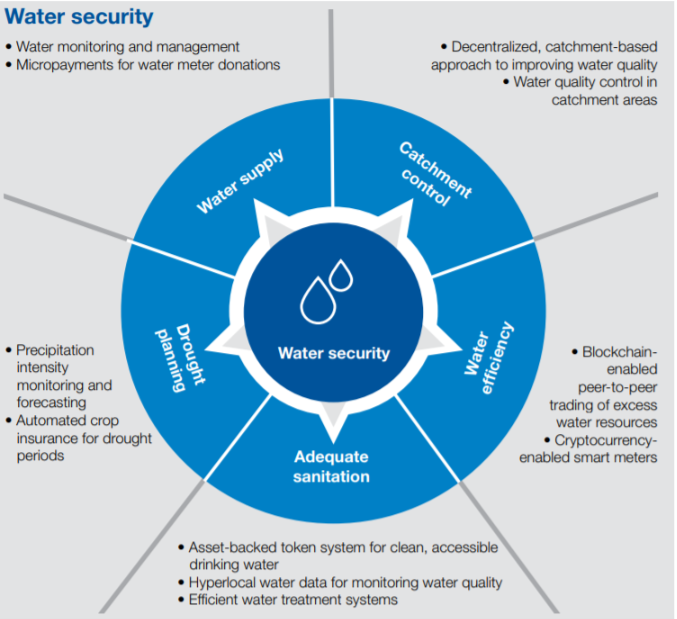
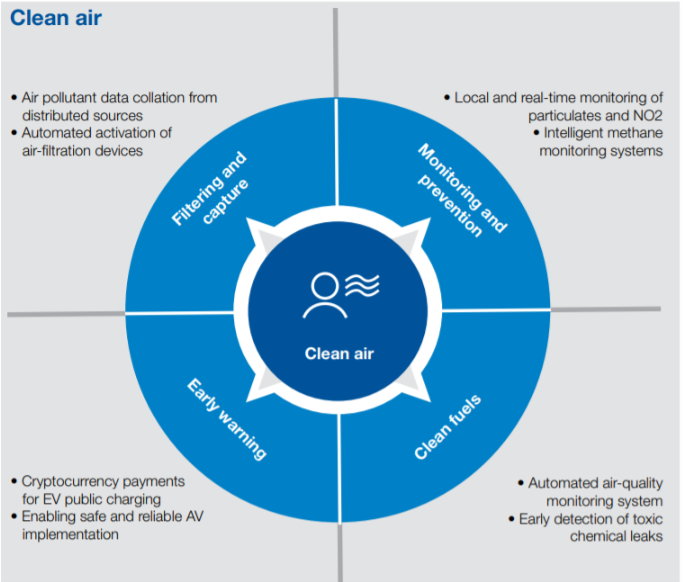
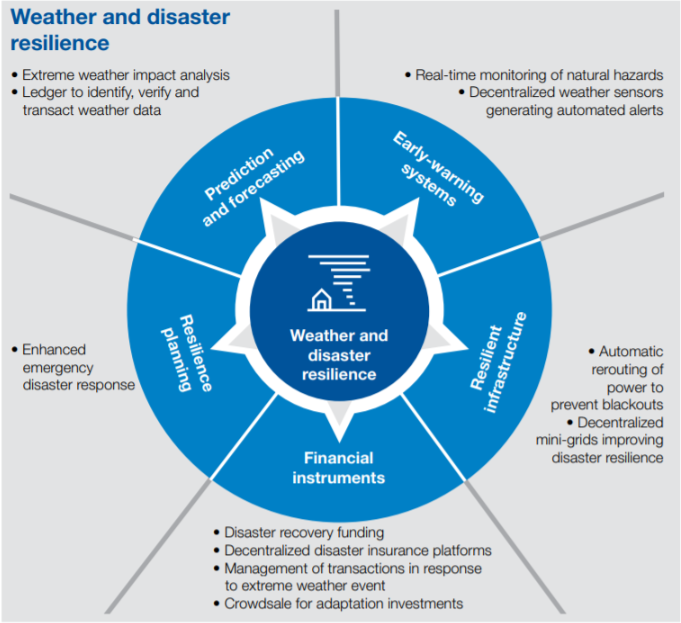
Blockchain use-case solutions that are particularly relevant across environmental applications tend to cluster around the following cross-cutting themes: enabling the transition to cleaner and more efficient decentralized systems; peer-to-peer trading of resources or permits; supply-chain transparency and management; new financing models for environmental outcomes; and the realization of non-financial value and natural capital.
Blockchain-Enabled Game Changers
The research paper then identified 8 ways blockchain technology could act as significant game changers, both in general and specifically pertaining to battling environmental challenges.
1. Transparent Supply Chains
Blockchain technology could enable full traceability and transparency of a product’s supply chain, since all data could be stored on an immutable ledger.
Because of this, consumers can see the complete composition of a product as well as the companies that are part of the value chain. Global supply chains are complex and involve many parties, and in the industry’s current state, accountability is hard to assess.
Through this, consumer can make more ethical and environmentally aware purchasing decisions.
From a consumer angle, the complexity of supply chains means that it is difficult for consumers to know how their consumption habits and purchasing decisions are affecting the environment, or the associated working and living conditions along the supply chain.
Waltonchain, OriginTrail, and Seal are industry examples that are working on this.
A key challenge in automated supply chains are oracles. Once the data is on the blockchain it’s immutable, but you have to first trust the source putting the data on the blockchain.
2. Sustainable and Decentralized Resource Management
Centralized resource management systems have several disadvantages, including inefficient supply and demand matching, and that they have (and are) a single point of failure.
Decentralized energy grids, like the platform the Power Ledger project is building, can give a substantial efficiency boost to resource management. Smart contracts cut out the middlemen and have the potential to ensure optimal demand and supply matching on a peer-to-peer basis
3. New Forms of Finance and Investing
Because permissionless blockchains are truly global, they can revolutionize access to capital for environmentally-oriented projects.
Blockchain-based platforms enable the seamless global management of complex finance structures, and can address a large, globally dispersed pool of donors and investors. This pool can fund the projects of their choosing and through the transparency and incentive models enabled by blockchain technology.
Traditional shareholders are converted into stakeholders in the new, decentralized system.
4. Enabling Incentivized Circular Economies
Circular economies is a concept that focuses on extracting the most value out of each resource through recycling and reusing it as many times as possible, effectively leading to substantially less waste.
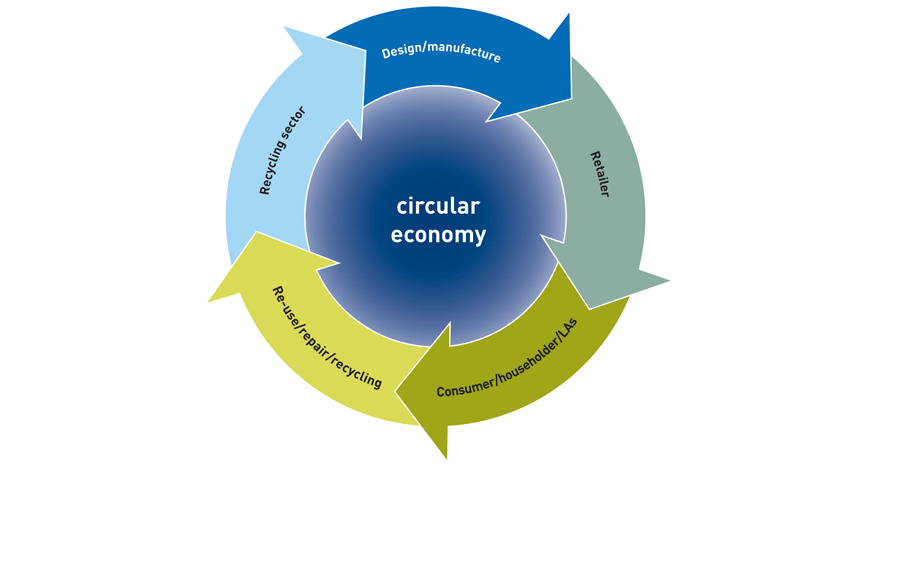
Through adequately designed token economics, individuals can be incentivized to unlock the value of products and materials that would otherwise be wasted and discarded, thus stimulating circular economies.
For example, IBM’s Plastic Bank is experimenting with blockchain technology to incentivize the collection of plastic in the ocean and Gainforest uses blockchain technology and a token economic model to control and incentivize farmers to preserve the rainforest in the Amazon.
5. Transforming Carbon Markets
Carbon trading is still prone to skepticism, mainly because of the lack of transparency of the market, non-standardization of the market, and often voluntary nature of participation in responsible carbon policies.
Blockchain applications have the potential to change this and finally enforce companies to pay for the additional stress they put on the environment by pricing this into their products and services. Besides the immutability and transparency that blockchains can bring to the carbon markets, they could also enable peer-to-peer carbon markets.
6. Next-Gen Sustainability Monitoring, Reporting and Verification
Consumers, investors, and governments are increasingly putting pressure on businesses to become sustainable and environmentally responsible.
Due to the nature of blockchain technology, this pressure could leading to businesses to recording their processes transparently, to ensure that companies are actually doing what they say they are doing.
7. Automated Disaster Preparedness and Aid Allocation
As we’ve seen earlier, natural disasters are increasing in both frequency and intensity, leading to a growing demand for preparation and effective real-time aid after such catastrophes.
Blockchain solutions could be transformational in terms of their ability to improve disaster preparedness and relief effectiveness. Additionally, smart-contract technology can determine which contract offer is the best one available based on the delivery needs of the community, including quantity, price, timing and location.
8. Earth-Management Platforms
As the research paper points out, this is the most hypothetical but also the most intriguing case for blockchain’s potential. Blockchain may be able to facilitate the collation, monitoring, management, and market mechanisms for many of our environmental issues and solutions.
Examples are a global ocean data platform for monitoring ocean resources, immutable property rights and agreements as to how certain pieces of land can be used, and decentralized environmental metrics through incentivized data collection.
Barriers That Blockchain Needs To Overcome
In the research paper, a clear overview of the existing challenges and risks for blockchain technology in general is also presented.
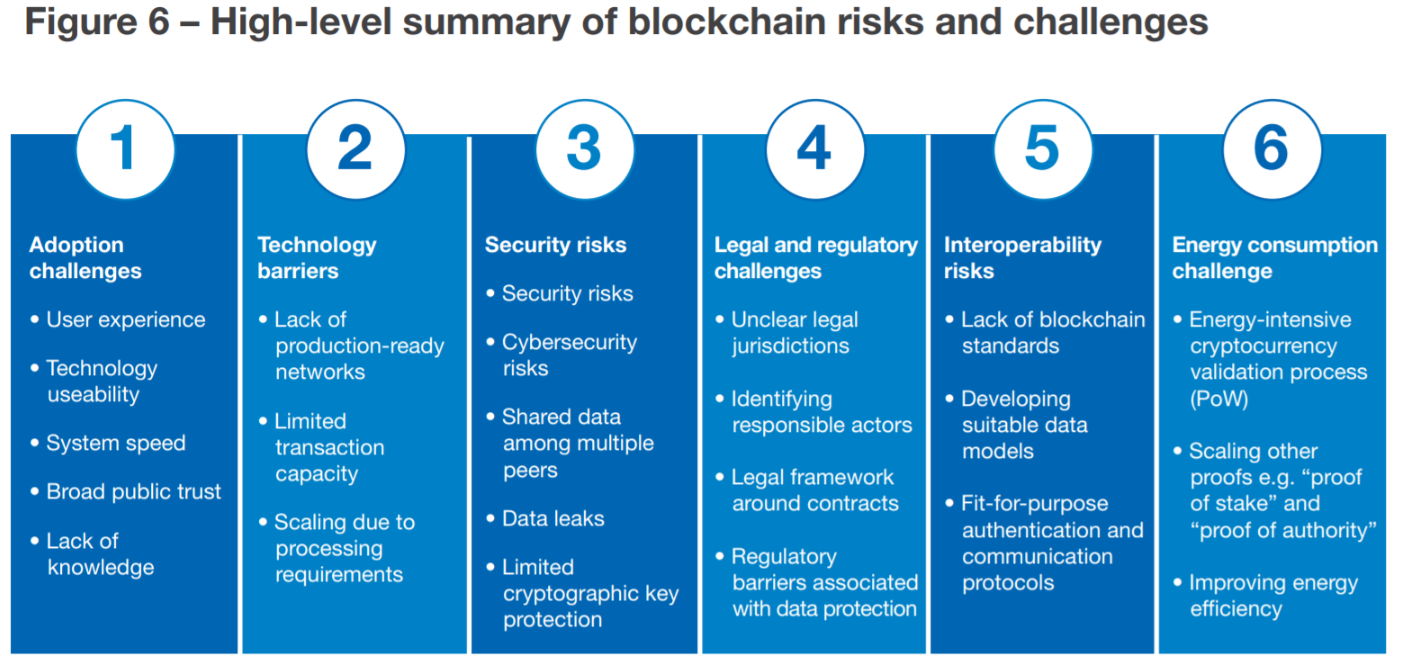
Basically, most of the addressed challenges and risks are caused by the technology’s infancy state.
Blockchain and its applications need to be more technologically advanced and robust, as well as more understood and trusted by the public before they are ready for mass adoption.
In the conclusion and recommendations section (page 26-30), there are a lot of valuable insights on blockchain technology, especially with regards to where the technology actually makes sense to implement and how to implement it.
Concluding Remarks
Even though it is becoming increasingly clear how serious our environmental challenges are, the reality is that in the end, only a minority of entrepreneurial activity and innovations are targeting these issues. The blockchain industry is no exception.
In the research paper, a wide variety of exciting opportunities for blockchain technology with regards to our environment are presented, as well as opportunities to take on the biggest environmental challenges we are currently facing:
The opportunity for blockchain-enabled innovation to benefit humankind and our environment is substantial, but the technology itself is still at a relatively early stage, with many hurdles to overcome. Far from being an obstacle, this presents an important opportunity for stakeholders to collectively ensure that the future development of blockchain technology constitute ‘responsible blockchain’. If this is achieved, blockchain can be expected to play an important role in enabling new technological solutions to pressing environmental challenges, including climate change, biodiversity, ocean health, water management, air pollution, resilience and waste reduction.
This article provides a brief summary of the in-depth research paper published by the World Economic Forum. To learn more, you should read the full paper for an informed and proactive perspective on how blockchain can help us to find a sustainable balance with our natural environment.

